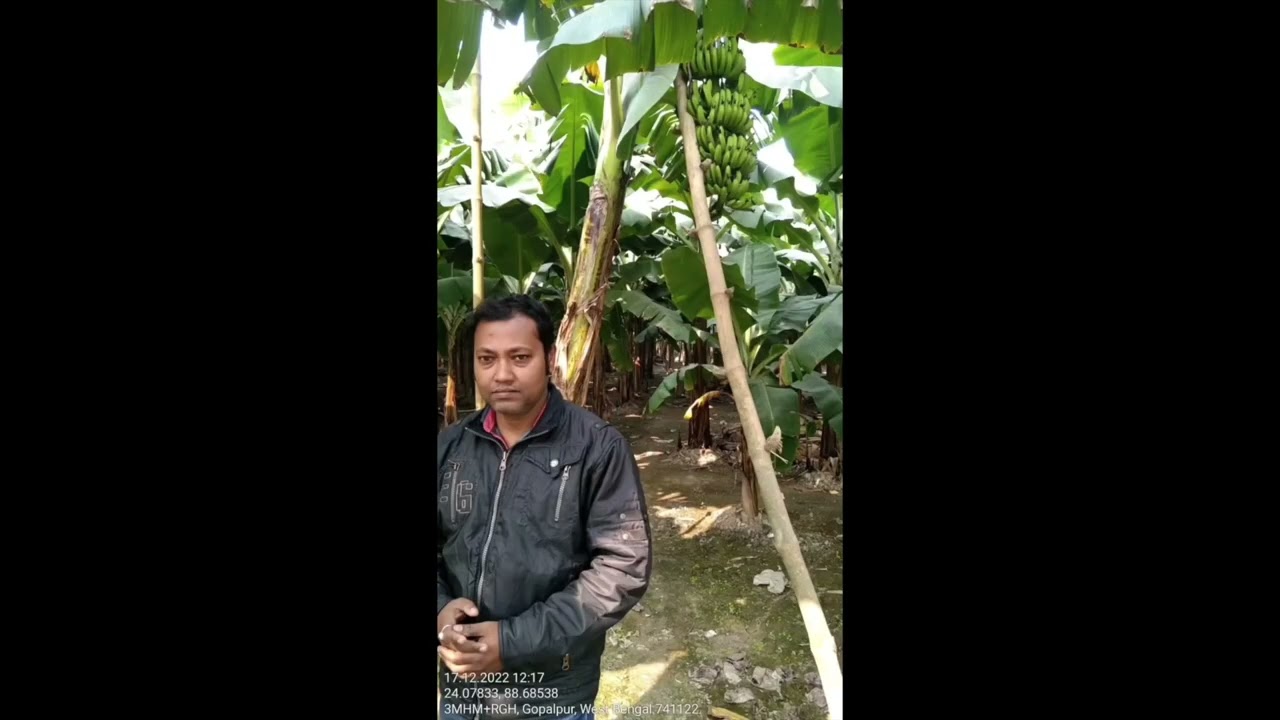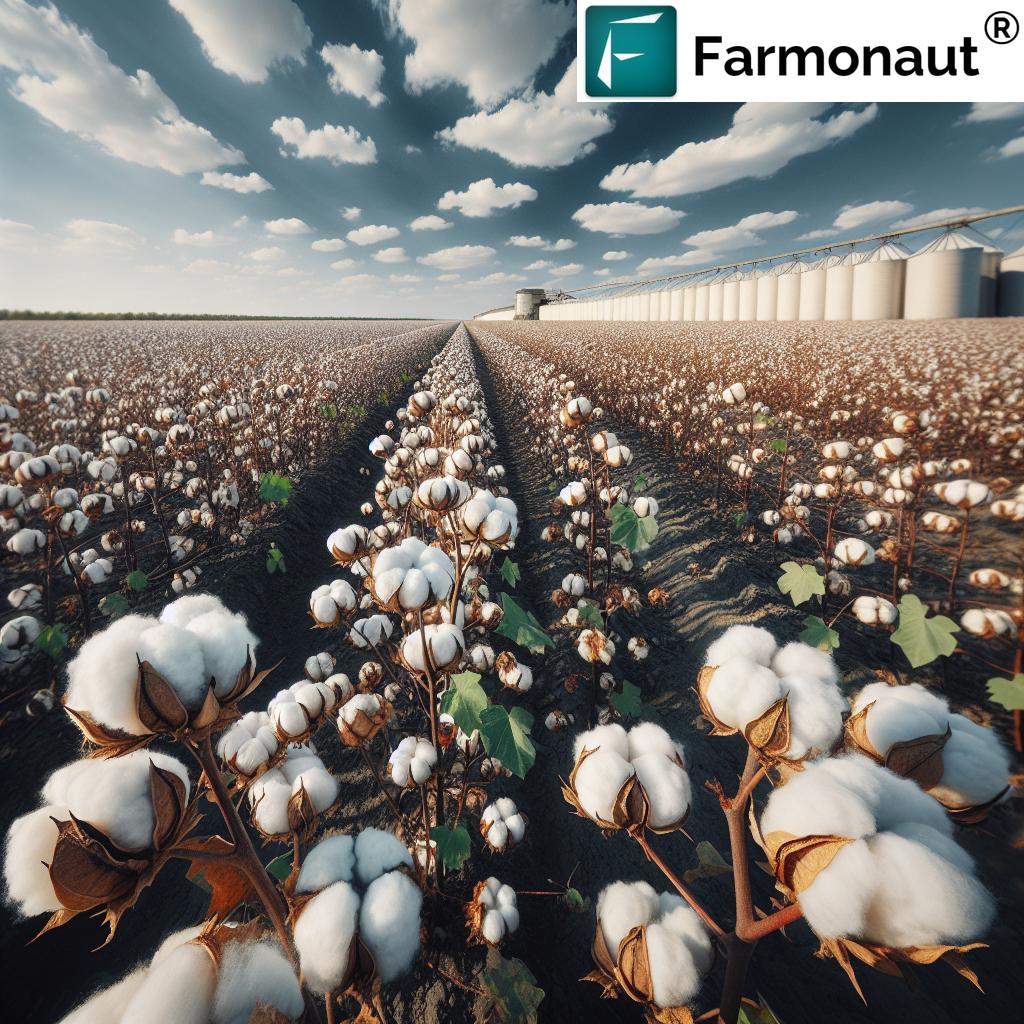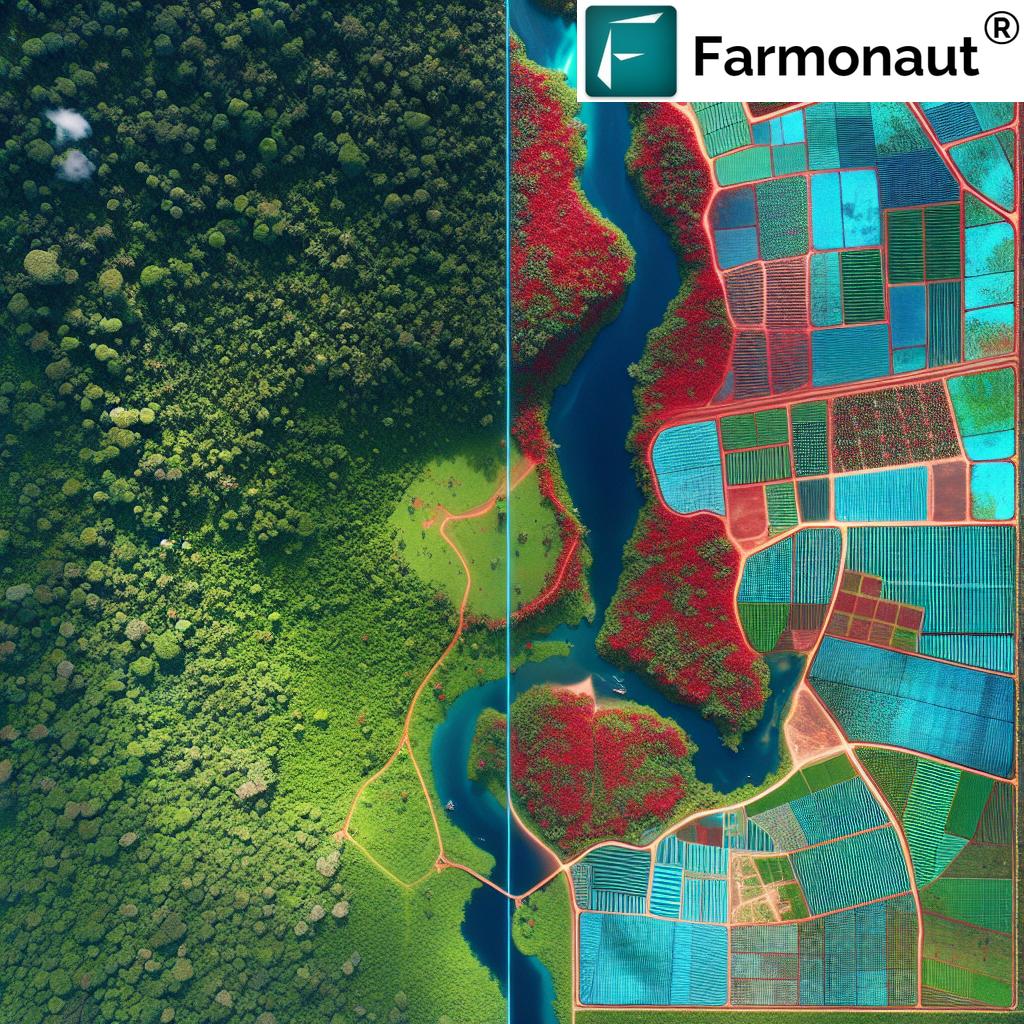Where Is Cotton Mainly Grown in India? Top 10 Regions
“Maharashtra leads India’s cotton production, contributing over 30% to the nation’s total cotton output annually.”
Table of Contents
- Cotton Production in India: An Overview
- Top 10 Cotton-Producing Regions in India
- Top 10 Cotton-Producing Regions Table
- Climatic and Soil Conditions for Cotton Cultivation
- Cotton Farming Challenges in India
- Sustainable Cotton Farming Practices
- Economic Importance of Cotton in India
- How Farmonaut Empowers Indian Cotton Cultivation
- FAQs about Cotton Cultivation in India
- Conclusion
Cotton Production in India: An Overview
Cotton, commonly known as “white gold,” forms the backbone of India’s textile industry and has a significant influence on the nation’s agricultural landscape. With cotton production in India spanning millions of hectares and involving countless farmers, it is not only an essential crop for industrial growth but also a lifeline for rural economies. India stands as the world’s largest cultivated area for cotton and a top contributor to the global cotton market.
This article comprehensively explores the top 10 regions for cotton production in India, analyzing their climatic and soil conditions, cultivation practices, and the pivotal role these states play in the country’s economy and the rapidly evolving cotton industry.
- Cotton covers approximately 13 million hectares in India (MyNation).
- Annual cotton yield in India comprises 6–7 million metric tonnes, contributing almost 25% of the global output.
- The crop’s significance extends from major industrial cities to widespread rural districts, impacting the livelihoods of millions.
For real-time crop health insights, soil monitoring, and resource optimization on your cotton farms, try Farmonaut’s advanced farm management solutions via web, Android, or iOS. Access the platform now or explore our API for seamless data integration.
Top 10 Cotton-Producing Regions in India
The distribution of cotton production in India is predominantly marked by ten key states, each with distinctive soil, climatic, and cultivation practices that make them ideal for cotton growth. Understanding these regions provides valuable context for the industry’s trends and output.
Let’s delve into India’s top cotton-producing regions:
“India’s top 3 cotton-producing states—Maharashtra, Gujarat, and Telangana—account for nearly 65% of national production.”
-
Gujarat
Gujarat leads as the hub of India’s cotton industry, accounting for ~27% of the nation’s total production. Its fertile black soils and favorable climate in Amreli, Bhavnagar, and Rajkot districts make it ideal for cotton cultivation.
-
Maharashtra
Maharashtra contributes about 23% to the nation’s output. Vidarbha and Marathwada regions—with Yavatmal, Amravati, and Jalgaon districts—are known for extensive cotton fields.
-
Telangana
As the third largest contributor, Telangana provides nearly 16% of the country’s production. Adilabad, Warangal, and Khammam districts dominate regional cotton cultivation.
-
Rajasthan
Rajasthan’s contribution is about 8%, centered in Nagaur, Jodhpur, and Pali districts, thriving in the arid northwestern tracts.
-
Karnataka
Karnataka produces 6% of India’s cotton yield. Bijapur, Dharwad, and Bellary are the major districts for cotton farming.
-
Madhya Pradesh
Madhya Pradesh holds 4% of the nation’s output, with Khargone district at the center of production.
-
Andhra Pradesh
At 5% of national production, Andhra’s Guntur, Prakasam, and Kurnool districts are prominent for lush cotton fields.
-
Haryana
With 5% share, Haryana sees extensive cotton farming in Sirsa, Fatehabad, and Hisar districts.
-
Punjab
Punjab accounts for 3%, mainly in Bathinda, Moga, and Ludhiana districts.
-
Odisha
Odisha, though a relatively smaller player at 2%, is primarily centered in Subarnapur district for its cotton growth.
Top 10 Cotton-Producing Regions Table
To visualize the distribution and industry context of cotton production in India, here’s a **comprehensive comparison table** highlighting **key metrics for each of the top states**.
| Rank | State/Region | Est. Annual Production (lakh bales) | % of National Production | Major Cotton-Growing Districts | Predominant Soil Type | Notable Sustainable Practices |
|---|---|---|---|---|---|---|
| 1 | Gujarat | 89 | 27% | Amreli, Bhavnagar, Rajkot | Deep black clayey soils | Water-saving drip irrigation, soil moisture monitoring |
| 2 | Maharashtra | 75 | 23% | Yavatmal, Amravati, Jalgaon | Medium to deep black soils | Integrated pest management, rainwater harvesting |
| 3 | Telangana | 52 | 16% | Adilabad, Warangal, Khammam | Mixed black soils | Govt. organic subsidy programs, natural pesticide adoption |
| 4 | Rajasthan | 26 | 8% | Nagaur, Jodhpur, Pali | Sandy loam soil | Drought-resistant farming, soil cover crops |
| 5 | Karnataka | 19 | 6% | Bijapur, Dharwad, Bellary | Shallow black & red soils | Contour ploughing, mixed cropping |
| 6 | Andhra Pradesh | 17 | 5% | Guntur, Prakasam, Kurnool | Mixed red and black soils | Bio-fertilizers, efficient irrigation |
| 7 | Haryana | 16 | 5% | Sirsa, Fatehabad, Hisar | Well-drained alluvial soils | Zero tillage, micro-nutrient management |
| 8 | Madhya Pradesh | 13 | 4% | Khargone | Black cotton (regur) soils | Organic shift in Chhindwara, natural inputs |
| 9 | Punjab | 8 | 3% | Bathinda, Moga, Ludhiana | Alluvial soils | Laser levelling, crop rotation |
| 10 | Odisha | 4 | 2% | Subarnapur | Red sandy loam soils | Green manure, low-chemical input |
Climatic and Soil Conditions for Cotton Cultivation
Cotton cultivation practices in India are highly influenced by climatic conditions and soil types. Identifying the best soil for cotton cultivation and ensuring suitable climates leads to higher yields and improved quality.
1. Ideal Temperature and Rainfall for Cotton
- Cotton thrives in warm, tropical climates—ideal temperatures range from 21°C to 30°C.
- The crop requires an annual rainfall of about 50–75 cm.
- Well-distributed rainfall supports seed germination and boll development, while excess water can cause crop failure.
2. Best Soils for Cotton Growth in India
-
Northern India:
Deep alluvial soils—fertile and well-drained, excellent for cotton. -
Central and Western Regions:
Black cotton soils (regur)—high moisture-holding capacity, ideal for rainfed farming. -
Southern and Eastern India:
Mix of red loam and sandy soils, used with integrated practices.
Cotton is sensitive to waterlogging, so well-drained soils are crucial. While the crop tolerates moderate salinity, long-term success relies on sustainable soil management.
India’s wide range of soils and climatic conditions enables spanning of cotton fields across diverse regions, supporting the industry’s growth and enhancing our large scale farm management services for precision agriculture.
Cotton Farming Challenges in India
Cotton farming challenges in India are multi-dimensional, directly impacting productivity and livelihoods. Despite India’s dominance in the global market, issues remain:
- Market Volatility: Fluctuating cotton prices and unpredictable demand can result in unstable incomes for farmers.
- Water Scarcity: Inadequate water availability in key states like Maharashtra and Telangana can reduce crop yield.
- Pest Infestations: The notorious pink bollworm and other pests cause substantial damage, often requiring frequent pesticide use.
- Input Costs & Access: Rising costs of fertilizers, seeds, and labor strain farm budgets.
- Climate Change: Shifting climatic conditions increase weather uncertainties, impacting both sowing and harvesting schedules.
- Soil Health Degradation: Overuse of chemicals has led to declining soil fertility in certain districts.
To tackle these issues, modern technologies and sustainable cotton farming methods are gaining traction in major cotton producing states.
We at Farmonaut provide AI-based crop management and pest prediction, giving farmers reliable, real-time insights to prevent losses, reduce resource usage, and promote resilience in the face of climate unpredictability.
Sustainable Cotton Farming Practices in India
Sustainable cotton farming is crucial not just for environmental protection but for sustained livelihood and industry growth. Here’s how Indian farmers and policymakers are promoting green practices:
- Organic Transformation: Regions like Chhindwara in Madhya Pradesh are shifting from GMO to organic farming practices, utilizing natural fertilizers and botanical pest control (Le Monde).
- Integrated Pest Management (IPM): Reducing synthetic pesticide reliance by encouraging natural predators and rotation systems.
- Water Management: Use of drip and sprinkler irrigation, especially in the arid districts of Gujarat, Rajasthan, and Maharashtra.
- Soil Conservation: Crop rotation, cover cropping, and the addition of compost maintain and enrich soil quality.
- Remote Monitoring & Data-Driven Decision-Making: Leveraging satellite imagery (like ours at Farmonaut) to monitor soil moisture, identify stressed areas, and guide interventions precisely, contributing to lowering the farm’s carbon footprint.
With Farmonaut’s large-scale farm management tools, entire plantations and farm clusters can monitor compliance with sustainability goals, guiding better resource management and increasing profitability in the cotton sector.
Economic Importance of Cotton in India
Cotton is not just a crop—it’s a powerhouse for the Indian economy and the heart of the nation’s textile industry. Here’s why:
- Direct Livelihood: Over 6 million Indian farmers depend directly on cotton cultivation.
- Employment Generator: The cotton value chain provides jobs to countless rural workers—in harvesting, ginning, spinning, and textiles.
- Industrial Backbone: As a leading input for India’s textile mills, cotton fuels a sector that contributes ~2% of the nation’s GDP.
- Global Stature: India is a world leader in both cotton volume produced and export value.
- Multiplier Impact: Healthy cotton harvests positively impact the rural economy, supporting other industries, agri-services, and retail.
With new crop loan and insurance solutions, Indian cotton farmers can now access fairer credit and protection—bolstering their ability to invest in better seeds, equipment, and sustainable farming methods.
From high-yield fields in Gujarat to innovative organic clusters in Madhya Pradesh, the economic importance of cotton in India is set to grow with continued modernization and technology adoption.
How Farmonaut Empowers Indian Cotton Cultivation
As the Indian cotton sector advances, data-driven farming and sustainability tools are essential. Farmonaut provides powerful solutions specifically tailored for cotton growers:
-
Satellite Crop Health Monitoring:
We empower farmers to monitor cotton health using NDVI imagery, assess soil moisture, and act on pest alerts—optimizing yield and reducing crop loss. -
Jeevn AI Advisory:
Receive real-time, hyper-local recommendations for cotton irrigation, pest control, and fertilization, drawn from both satellite and climatic data. -
Blockchain-Based Traceability:
Our traceability platform ensures transparent cotton supply chains for Indian textiles—boosting producer credibility, securing standards, and building trust with global buyers. -
Resource and Fleet Management:
Monitor farm machinery to reduce fuel costs, manage warehouse logistics, and streamline large cotton operations with our tools. Learn more about Fleet Management for your cotton farming needs. -
Carbon Footprint Tracking:
Track emissions, test sustainable interventions, and improve environmental compliance for green and profitable cotton farming. -
API Integration:
Developers and corporates can build efficient systems using our satellite and weather API and API Developer Docs.
Frequently Asked Questions: Cotton Cultivation in India
- Which state tops cotton production in India?
- Gujarat leads cotton production (27% of national output), closely followed by Maharashtra (23%) and Telangana (16%).
- What are the ideal climatic and soil conditions for cotton?
- Cotton requires tropical climates, temperatures between 21°C–30°C, and 50–75 cm annual rainfall. Well-drained, deep black cotton soils or alluvial soils are best for optimal yields.
- Which districts in Maharashtra are most famous for cotton cultivation?
- Vidarbha and Marathwada regions—especially Yavatmal, Amravati, and Jalgaon—are known for high cotton output in Maharashtra.
- What are the key sustainable practices for cotton in India?
- The main sustainable practices include organic cultivation, integrated pest management, water-saving irrigation, soil conservation, and using farm tech for remote monitoring.
- How does Farmonaut help cotton farmers?
- Farmonaut provides cotton growers with advanced tools for satellite-based monitoring, AI-driven crop insights, supply chain traceability, fleet management, and carbon footprinting—leading to higher productivity and profits.
- How can I access Farmonaut’s cotton monitoring tools?
- You can get started on Farmonaut via web, Android, or iOS, or learn more about API access and integration through our API docs.
Conclusion: Cotton’s Enduring Impact on India’s Agricultural Landscape
India’s prominence in global cotton is anchored in its diverse regions, robust production practices, and evolving focus on sustainability. The success of major cotton producing states—from Gujarat and Maharashtra to Telangana—is deeply linked to favorable soil qualities, tropical climates, and innovative farming approaches.
The transition to sustainable cotton farming, bolstered by remote data and real-time analytics, is crucial for future growth and resilience. As India continues to modernize its cotton sector, solutions like those offered by Farmonaut help propel farmers, agribusinesses, and the broader industry towards greater productivity, eco-friendliness, and transparency.
If you are looking to maximize yield, optimize inputs, and manage large tracts of cotton or other crops, Farmonaut is your partner for data-driven, sustainable agriculture.






















